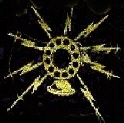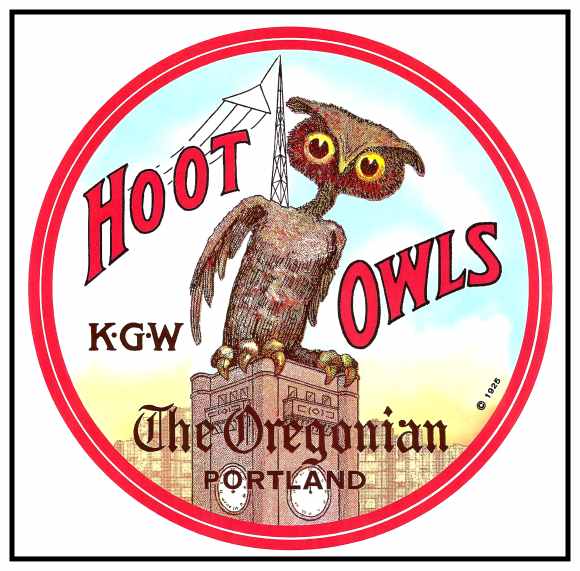 |
 |
|||||||||||||||||
|
|
||||||||||||||||||
|
|
 |
|
|
||||||||||||||||||||||||||||||||||||||||||||||||||||||
|
|
|
|
Main Street was a muddy mess circa 1908 before the wood planks were laid. |
|
|
Main Street in Bull Run was paved with wood planks circa 1910. |
|
Within a couple years, Bull Run outgrew Unavilla and the post office moved about a mile east to the town of Bull Run on Nov. 22, 1895. Main Street was located at the beginning of what is now Water Works Road. There are plateaus above the Bull Run River, on the way to Marmot, where wild cattle ran free, hence the name “Bull Run.” The bulls had probably escaped from pioneers who came in Wagon Trains from the East on The Oregon Trail. |
|
|
Marmot, Oregon was established at Aschoffs’ Mountain Home along The Barlow Trail about six miles east of Sandy. |
|
Part of The Oregon Trail was known as The Barlow Trail, where wagon trains forged through Marmot, Sandy, Jack Knife (Eagle Creek), Barton and the surrounding areas on their way to Oregon City and the Willamette Valley. A favorite campsite was just east of Marmot at Corral Rock. There are two very large rocks that were formed by molten lava from an early eruption on Mt. Hood. These rocks, which are still there today, were used to keep the Pioneers’ cattle in a corral for overnight rest. Adolph Aschoff, one of the most colorful characters in the history of Mount Hood, was born at Celle, Hanover, Germany on May 21, 1849. In 1869, he immigrated to New York as a political exile and made his living by using his wood carving skills. By 1871 he had drifted to Kansas to file on a homestead where he met and married his lifelong partner, Dora. In 1882 they moved to Portland, and found a place they named “Marmot” where they established Aschoffs’ Mountain Home in 1883. Aschoff was the first Pony Express rider to ride to Government Camp and he established the first Toll Gate at Marmot. Aschoff had acquired many influential friends in his short stay in Portland, so when he built resort cabins at Marmot, business came his way quickly. A hotel followed as did other enterprises and Aschoff established a post office at Marmot on February 18, 1886. He was appointed postmaster. In 1902, the hotel was enlarged to 23 rooms . Aschoff and his wife liked horses and they bred horses for racing. Part of their chores in running the resort included feeding and stabling horses for relief on the stage and freight wagons operating on the road. Aschoff was often involved in transporting wagon loads of vacationers off to see the sights at Government Camp. This led to his climbing Mount Hood and his friendship with William Steel and Oliver Yocum. When the Mazamas held their organizational climb in 1894, Aschoff attended and became a prominent charter member. Many a weekend saw 200 people at the hotel, especially when the Mazamas met there. The Aschoffs reared nine children at their home at Marmot, which explains how Adolph could be postmaster, storekeeper, hotelier and mountain guide; and still hold the position of Supervisor of Cascade Forest Reserve North. He had a good deal of family help. On May 19, 1899, he was appointed Ranger on the Forest, and in time became Supervisor with many rangers under his direction. His employment with the Forest Service ended January 1, 1906. He was an accomplished musician and composer and he was an artist as well, sketching and painting pictures and using paper cutouts to make works of art. Dora Aschoff died in 1928 and Adolph sold his property in 1930 to Percy T. Shelley. Adolph Aschoff died on March 16, 1930, two weeks after the sale was reported. On July 4, 1931, the Shelley family lost their worldly belongings when the old hotel and cabins burned to the ground. The museum, post office and store on the south side of Marmot Road were saved. Today, all remains of the town of Marmot are gone. Only a few old boards and some ancient apple trees mark the spot. |
|
|
The Bull Run Powerhouse under construction circa 1909. |
|
|
This close-up view shows a train used in construction of the Powerhouse. |
|
|
A somewhat later view of construction looking northwest. |
|
|
This view of construction looking southeast shows the tracks going to the Powerhouse and the Covered Bridge in the distance. |
|
|
This close-up view shows the Tent City on the left and the Covered Bridge in the center. A rail car sits on the lower siding to the right. |
|
|
Early view of the completed Bull Run Powerhouse. |
|
By 1908, the need for lights and electricity led to the building of the Bull Run Powerhouse and Roslyn Lake. Roslyn Lake was a man-made reservoir that stored water which was used in power generation. Water for Roslyn Lake was diverted to a concrete canal at the Marmot Dam on the Sandy River. The canal followed the river for about a mile and a half, then the water went through a tunnel under the Devil’s Backbone and into the reservoir behind the Little Sandy Dam on the Little Sandy River. |
|
|
The wooden flume began at the Little Sandy Dam and it followed the Little Sandy River till it reached the Bull Run River. From there, the water went through another tunnel at the west end of the Devils Backbone, where it emptied into Roslyn Lake. Rails were laid on top of the flume and a train was built to service it. Just over the hill below Roslyn Lake, the Bull Run Powerhouse was built, along the Bull Run River. The Flume Service Car sits atop the flume. |
|
|
After PRL&P purchased the assets of the Mt. Hood Railway and Power Company in 1912, the headquarters building became Bull Run’s Clubhouse for use by employees of the PRL&P. Later, the building also served as a hotel and community center. |
|
|
Beautiful reservoirs were built at Mt. Tabor and in Washinton Park that were connected to Bull Run by thirty miles of pipe. |
|
The Mt. Hood Railway and Power Company opened a 22-mile steam line from Montavilla to Bull Run in 1911 with 30 stations. Nearly all the stations were located at little towns that sprang up around the streetcar line. There was Montavilla (originally Mount Tabor Villa), Russellville, Ascot, Rockwood, Powell Valley, Gillis, Pleasant Home, Cottrell and Mayberry, where the tracks turned south and followed the Sandy River to a long high trestle at Bull Run Park (now known as Dodge Park) and on to the town of Bull Run by the Bull Run Powerhouse. Several of these towns had their own Post Office for a while. |
|
|
A long high trestle was first constructed of wood over the Sandy River at Dodge Park and in 1921 they replaced it with a steel trestle. |
|
|
A Montavilla city car at the end of the line, at 90th & Glisan, about to return to Portland via Glisan Street, where it shares the depot with the Bull Run cars. The tracks on the right went to Bull Run. |
|
|
Early view of Bull Run Car 1125 making a stop at Pleasant Home. |
|
The Portland Railway Light and Power Co. acquired the Mt. Hood Railway and Power Company’s assets and operating equipment in 1912. They added overhead electric wires above the rails in 1913, and began operating electric streetcars on the Mt. Hood Division. |
|
|
Dignitaries and their spouses at Bull Run on a special run of the ornately decorated private car “Portland.” |
|
Passenger service continued until December 27, 1930, while freight service continued until November 26, 1932 when declining revenues brought on by the Depression forced the abandonment of the line. The tracks were removed and salvaged from East Gresham to Bull Run. |
|
Two historic automobile bridges and a bridge for a water pipe cross the Sandy and Bull Run Rivers. The Bridge over the Sandy River was moved to Bull Run Park in 1926 after serving as the eastern-most span of Portland’s Burnside Bridge since 1894. A new, larger Burnside Bridge was built in 1926 and the 32-year-old bridge was moved, piece-by-piece, to Bull Run Park (now Dodge Park), on the Sandy River. The largest of the three spans was placed over the Sandy River, next to a similarly designed bridge with wrought-iron trim, that was built in 1893 to hold a large pipe carrying Portland’s drinking water. Dodge Park was a small destination Amusement Resort that flourished in the summers. It was famous for boating, swimming, picnicking, camping and fishing and a small town grew around it. Several of the old buildings are still there, including the old Bathhouse at the Park. The old Bathhouse was built like a Lodge and it is fairly well preserved. Over half of the building is not open for public use. Another bridge span that was salvaged from the old Burnside Bridge was moved to the Bull Run River, near the Bull Run Powerhouse. It replaced the aging covered bridge and served the residents of the town of Bull Run, which was across the river, and continues to serve area residents today. The remaining span was sold to the city of Aberdeen, Washington. Eventually, fewer employees were needed to operate the power and water generation facilities and the town was dismantled. On January 7, 1939, the Post Office was moved to nearby Camp Namanu where it remained until it closed in 1953. One of Oregon’s finest camping resorts, Camp Namanu was founded in 1924 and it continues under the direction of Camp Fire USA. Roslyn Lake was where we spent many a summer afternoon during Church Camp; it was like an Amusement Resort. Everyday, we would swim, rent boats and play softball. It was a little bit of Heaven on Earth. We usually had picnics there as well. What fun!!! The Bull Run Powerhouse closed in 2007. The flume was dismantled and Roslyn Lake was drained. Today the ghosts are all that remain as Bull Run became The Town That Time Forgot. |
|
|
 |
|||
|
copyright © 2017 PdxHistory.com |
| [Portland History] [Site Map] [Amusement Parks] [Historic Portland] [Department Stores] [Streetcars] [Railroads] [Mt Hood] [Oregon Coast] [Post Card History] [Portland Hotels] [Portland Neighborhoods] [Bull Run] [Getaways] [Contact Us] |